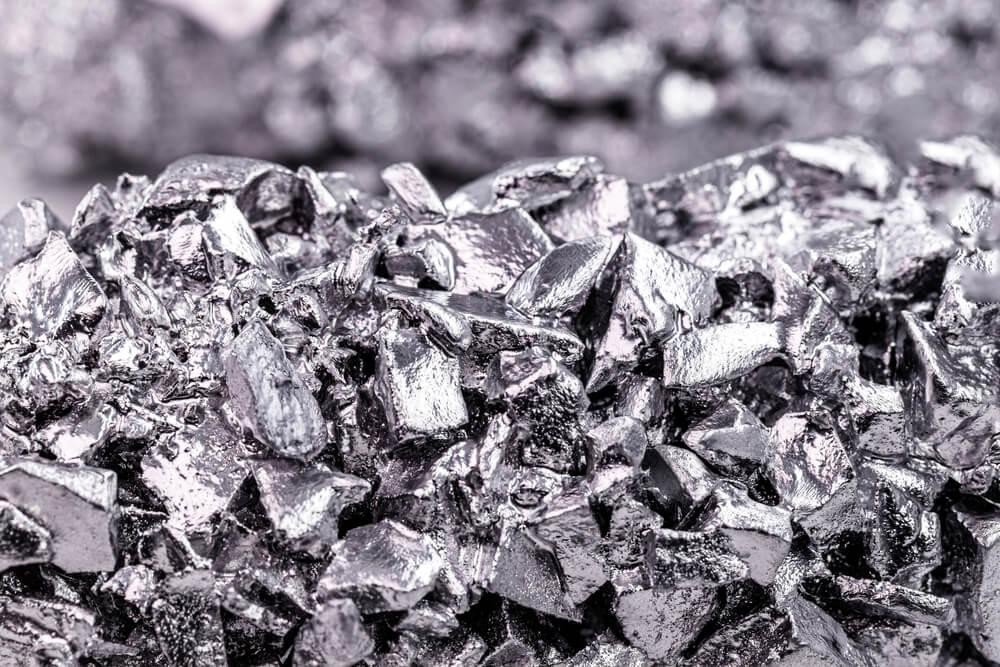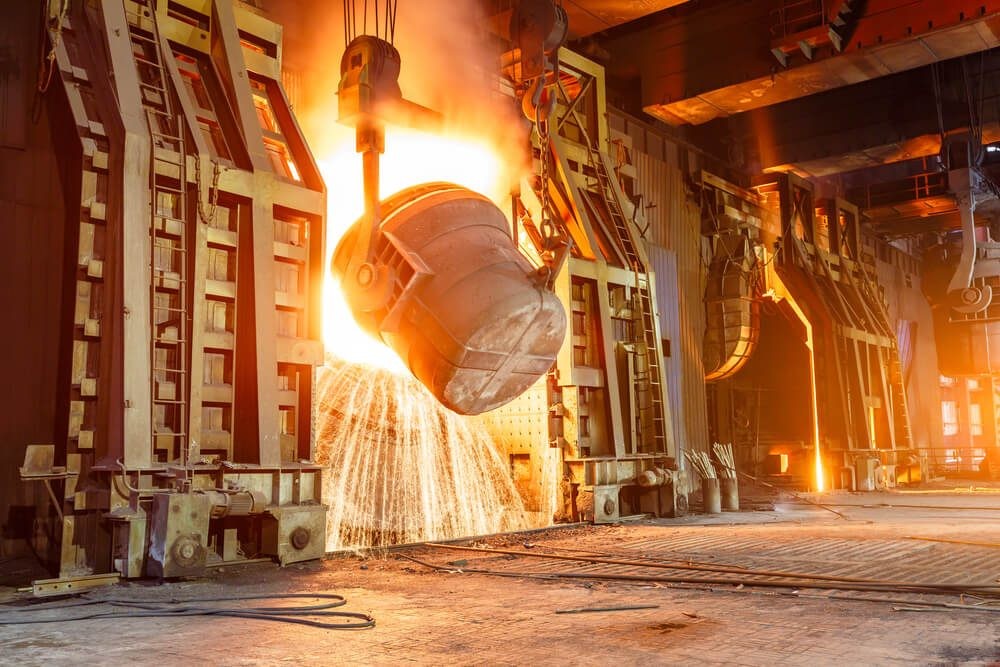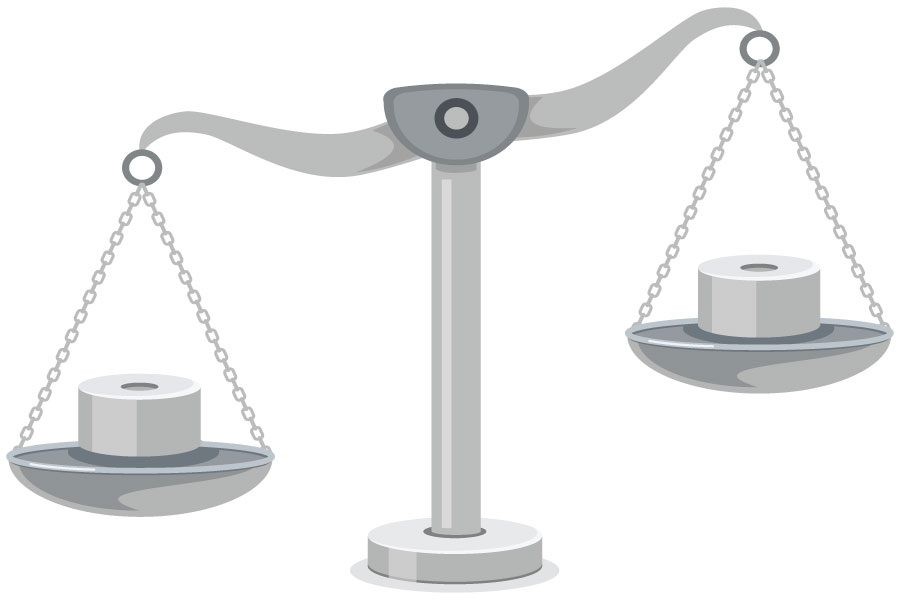Titanium versus steel: Understanding their weight differences and applications is crucial for informed decision-making in various industries. At COMPARE.EDU.VN, we provide a detailed comparison, exploring density, strength-to-weight ratios, and real-world uses, empowering you to select the optimal material for your specific needs. Discover the advantages of each metal, including titanium’s corrosion resistance and steel’s cost-effectiveness, along with insights into material selection, weight comparison, and strength properties.
1. Understanding Titanium and Steel: An Overview
Titanium and steel are two of the most commonly used metals in various industries, from aerospace to construction. Each material possesses unique properties that make it suitable for specific applications. Understanding these properties is essential when choosing between titanium and steel for your project.
1.1. What is Titanium?
Titanium is a naturally occurring element known for its high strength-to-weight ratio, excellent corrosion resistance, and biocompatibility. It was first discovered in 1791 by William Gregor and has since become a popular choice for applications requiring lightweight and durable materials. Titanium is found in minerals such as rutile and ilmenite. Its extraction is complex, contributing to its higher cost compared to steel. The superior resistance to corrosion and high strength make it ideal for aerospace and medical use.
1.2. What is Steel?
Steel is an alloy made primarily of iron and carbon, with other elements added to achieve specific properties. It’s known for its high strength, durability, and affordability. Steel has been used for thousands of years and is a staple in construction, manufacturing, and many other industries. Varying the composition of steel can alter its properties. For example, stainless steel contains chromium, providing significant corrosion resistance.
1.3. Key Differences at a Glance
Here’s a quick look at some of the key differences between titanium and steel:
| Feature | Titanium | Steel |
|---|---|---|
| Density | Lighter | Heavier |
| Strength-to-Weight | Higher | Lower |
| Corrosion Resistance | Excellent | Varies (Stainless steel offers good resistance) |
| Cost | Higher | Lower |
| Biocompatibility | High | Low (unless specially treated) |




2. Diving Deeper: Properties of Titanium
Titanium’s distinct properties make it a valuable material in a wide array of applications. Its combination of strength, lightness, and resistance to corrosion gives it an edge in demanding environments.
2.1. Strength and Weight
One of titanium’s most significant advantages is its exceptional strength-to-weight ratio. It is as strong as some steels but is about 45% lighter. This characteristic is especially crucial in aerospace applications where weight reduction directly translates to fuel efficiency. The tensile strength of titanium alloys can range from 275 MPa to over 1400 MPa, depending on the specific alloy and processing.
2.2. Corrosion Resistance
Titanium exhibits superior corrosion resistance compared to most steels. It forms a passive oxide layer on its surface that protects it from corrosion in many aggressive environments, including seawater, acids, and chlorides. This makes it ideal for marine applications, chemical processing, and medical implants.
2.3. Biocompatibility
Titanium is highly biocompatible, meaning it is well-tolerated by the human body. It does not react with bodily fluids or tissues, making it a common choice for medical implants such as hip replacements, dental implants, and pacemakers. The biocompatibility of titanium is due to its ability to integrate with bone tissue, a process known as osseointegration.
2.4. Thermal Properties
Titanium has a relatively high melting point of around 1,668°C (3,034°F). It also maintains its strength at high temperatures, making it useful in aerospace applications where components may be exposed to extreme heat. Its thermal conductivity is lower than that of steel, which can be an advantage in certain applications.
2.5. Forms and Alloys
Titanium is available in various forms, including commercially pure (CP) titanium and titanium alloys. CP titanium is highly corrosion-resistant, while titanium alloys, such as Ti-6Al-4V (Grade 5), are stronger and more suitable for high-stress applications. Different alloying elements can be added to titanium to enhance specific properties such as strength, ductility, and weldability.
3. Exploring Steel: Properties and Varieties
Steel, an alloy of iron and carbon, is a versatile material that offers a wide range of properties depending on its composition and treatment. It’s a cornerstone of modern industry, valued for its strength and cost-effectiveness.
3.1. Strength and Durability
Steel is known for its high tensile and yield strength, making it suitable for structural applications. The strength of steel can be further enhanced through various heat treatments and alloying processes. For example, high-strength low-alloy (HSLA) steels offer increased strength while maintaining good weldability and formability.
3.2. Types of Steel
There are several types of steel, each with unique properties:
- Carbon Steel: Contains primarily iron and carbon. It is strong but susceptible to corrosion.
- Alloy Steel: Contains additional elements like manganese, silicon, nickel, and chromium to enhance properties such as strength, hardness, and corrosion resistance.
- Stainless Steel: Contains chromium, which provides excellent corrosion resistance. It is commonly used in applications where hygiene and durability are essential.
- Tool Steel: High hardness and wear resistance, ideal for cutting tools and dies.
3.3. Corrosion Resistance of Steel
While carbon steel is prone to corrosion, stainless steel offers excellent resistance due to the presence of chromium. The chromium forms a passive oxide layer on the surface, protecting the steel from rust and corrosion. Other types of steel can be treated with coatings or other protective measures to improve their corrosion resistance.
3.4. Magnetic Properties
Most types of steel are ferromagnetic, meaning they are strongly attracted to magnets. However, some stainless steels, such as austenitic stainless steels, are non-magnetic. The magnetic properties of steel can be important in applications such as motors, generators, and magnetic shielding.
3.5. Cost and Availability
Steel is generally more affordable and widely available than titanium. This makes it a cost-effective choice for many applications where high strength and durability are required. The widespread availability of steel also means that it is easier to source and fabricate, contributing to lower project costs.
4. How Heavy is Titanium Compared to Steel? A Detailed Comparison
The weight difference between titanium and steel is a critical factor in material selection. Titanium’s lower density offers significant advantages in applications where weight reduction is essential.
4.1. Density Comparison
Density is a measure of mass per unit volume. Titanium has a density of approximately 4.51 g/cm³, while steel typically ranges from 7.8 to 8.0 g/cm³. This means that titanium is about 45% lighter than steel. This significant weight difference can have a substantial impact on the performance and efficiency of various products and structures.
4.2. Strength-to-Weight Ratio
The strength-to-weight ratio is a key metric for evaluating the efficiency of a material. It is calculated by dividing the material’s strength by its density. Titanium has a much higher strength-to-weight ratio than steel, making it a superior choice for applications where weight reduction is a priority. This is why titanium is widely used in aerospace components, high-performance sports equipment, and other weight-sensitive applications.
4.3. Real-World Examples
- Aerospace: In aircraft construction, using titanium can reduce the overall weight of the aircraft, leading to improved fuel efficiency and performance.
- Automotive: Titanium components in cars can reduce weight, resulting in better acceleration, handling, and fuel economy.
- Medical Implants: Titanium implants are lighter and more comfortable for patients compared to steel implants.
- Sports Equipment: Titanium is used in golf clubs, bicycles, and other sports equipment to provide a lightweight and high-strength alternative to steel.
4.4. Practical Implications of Weight Differences
The weight difference between titanium and steel has several practical implications:
- Fuel Efficiency: Lighter materials reduce fuel consumption in vehicles and aircraft.
- Performance: Lighter components improve the performance of sports equipment and machinery.
- Ease of Handling: Lighter materials are easier to handle and install, reducing labor costs and improving safety.
- Load Capacity: Lighter structures can support heavier loads without compromising structural integrity.
4.5. Detailed Density and Weight Specifications
| Material | Density (g/cm³) | Tensile Strength (MPa) | Yield Strength (MPa) | Strength-to-Weight Ratio |
|---|---|---|---|---|
| Titanium (Grade 5) | 4.43 | 895 | 828 | 202 |
| Steel (AISI 4130) | 7.85 | 670 | 435 | 55 |
This table illustrates that while steel may have a higher tensile strength, titanium’s superior strength-to-weight ratio makes it a more efficient material in certain applications.
5. Applications of Titanium and Steel
The choice between titanium and steel often depends on the specific requirements of the application. Both materials have unique advantages and are used in diverse industries.
5.1. Aerospace Industry
Titanium is extensively used in the aerospace industry due to its high strength-to-weight ratio, corrosion resistance, and ability to withstand high temperatures. It is used in aircraft engines, structural components, and fasteners. The weight savings achieved by using titanium can significantly improve fuel efficiency and performance.
5.2. Medical Industry
Titanium’s biocompatibility makes it an ideal material for medical implants. It is used in hip and knee replacements, dental implants, spinal fusion devices, and pacemakers. The body’s ability to integrate with titanium reduces the risk of rejection and complications.
5.3. Automotive Industry
Both titanium and steel are used in the automotive industry. Steel is used for structural components, chassis, and body panels due to its strength and affordability. Titanium is used in high-performance vehicles for components such as exhaust systems, suspension springs, and connecting rods to reduce weight and improve performance.
5.4. Construction Industry
Steel is a primary material in the construction industry. It is used in structural frameworks, bridges, and reinforcing bars in concrete. Steel’s high strength and affordability make it a cost-effective choice for large-scale construction projects.
5.5. Consumer Goods
Both titanium and steel are used in consumer goods. Stainless steel is commonly used in kitchen appliances, cutlery, and cookware due to its corrosion resistance and ease of cleaning. Titanium is used in high-end sports equipment, jewelry, and watches due to its lightweight, durability, and aesthetic appeal.
5.6. Chemical Processing Industry
Titanium’s excellent corrosion resistance makes it valuable in the chemical processing industry. It is used in heat exchangers, reactors, and piping systems that handle corrosive chemicals. The use of titanium can extend the lifespan of equipment and reduce maintenance costs.
6. Cost Considerations: Titanium vs. Steel
The cost difference between titanium and steel is a significant factor in material selection. Understanding the economic implications can help you make informed decisions for your project.
6.1. Raw Material Costs
Titanium is generally more expensive than steel due to the scarcity of titanium ores and the complex extraction process. The cost of raw materials can significantly impact the overall cost of a project.
6.2. Manufacturing Costs
The manufacturing process for titanium is more complex and energy-intensive than that for steel. This translates to higher manufacturing costs for titanium components. The difficulty in machining and welding titanium also contributes to higher costs.
6.3. Life Cycle Costs
While titanium may have higher upfront costs, its superior corrosion resistance can lead to lower maintenance costs and a longer lifespan compared to steel. In applications where corrosion is a concern, the life cycle costs of titanium may be lower than those of steel.
6.4. Cost-Benefit Analysis
A cost-benefit analysis should be performed to determine the most cost-effective material for your project. This analysis should consider factors such as raw material costs, manufacturing costs, life cycle costs, and the performance requirements of the application.
6.5. Factors Affecting Cost
- Market Demand: Fluctuations in market demand can impact the price of both titanium and steel.
- Alloy Composition: The specific alloy composition can affect the cost of the material.
- Manufacturing Volume: Higher manufacturing volumes can lead to economies of scale and lower per-unit costs.
- Supplier Pricing: Different suppliers may offer different pricing based on their own cost structures and market conditions.
7. Mechanical Properties: A Detailed Comparison
A thorough comparison of the mechanical properties of titanium and steel is essential for selecting the right material for your application. These properties determine how the material will perform under various conditions.
7.1. Tensile Strength
Tensile strength is the maximum stress a material can withstand before breaking. Steel generally has a higher tensile strength than titanium. However, titanium’s superior strength-to-weight ratio often makes it a better choice in applications where weight is a concern.
7.2. Yield Strength
Yield strength is the stress at which a material begins to deform permanently. Steel typically has a higher yield strength than titanium. This means that steel can withstand more stress before it starts to deform.
7.3. Elastic Modulus
Elastic modulus (Young’s modulus) measures a material’s stiffness or resistance to elastic deformation. Steel has a higher elastic modulus than titanium, meaning it is stiffer and less likely to deform under load.
7.4. Fatigue Strength
Fatigue strength is the ability of a material to withstand repeated stress cycles without failing. Titanium generally has better fatigue strength than steel. This makes it a good choice for applications where components are subjected to cyclic loading.
7.5. Hardness
Hardness measures a material’s resistance to indentation or scratching. Steel typically has higher hardness than titanium. This makes it more resistant to wear and abrasion.
7.6. Comprehensive Mechanical Property Table
| Property | Titanium (Grade 5) | Steel (AISI 4130) |
|---|---|---|
| Tensile Strength (MPa) | 895 | 670 |
| Yield Strength (MPa) | 828 | 435 |
| Elastic Modulus (GPa) | 110 | 200 |
| Density (g/cm³) | 4.43 | 7.85 |
| Hardness (HRC) | 36 | 55 |
This table provides a detailed comparison of the mechanical properties of titanium and steel, allowing for a more informed material selection process.
8. Corrosion Resistance: A Critical Factor
Corrosion resistance is a critical factor to consider when choosing between titanium and steel. The ability of a material to withstand corrosive environments can significantly impact its lifespan and maintenance costs.
8.1. How Corrosion Occurs
Corrosion is the degradation of a material due to chemical reactions with its environment. This can lead to weakening of the material and eventual failure of the component. Different types of corrosion include general corrosion, pitting corrosion, crevice corrosion, and stress corrosion cracking.
8.2. Titanium’s Superior Corrosion Resistance
Titanium exhibits exceptional corrosion resistance in a wide range of environments, including seawater, acids, and chlorides. It forms a passive oxide layer on its surface that protects it from corrosion. This makes it an ideal choice for marine applications, chemical processing, and medical implants.
8.3. Steel’s Vulnerability to Corrosion
Carbon steel is vulnerable to corrosion, especially in the presence of moisture and chlorides. Rust, the common form of corrosion in steel, can weaken the material and lead to structural failure.
8.4. Stainless Steel’s Corrosion Resistance
Stainless steel contains chromium, which provides excellent corrosion resistance. The chromium forms a passive oxide layer on the surface, protecting the steel from rust and corrosion. Stainless steel is commonly used in applications where hygiene and durability are essential.
8.5. Comparison in Various Environments
- Seawater: Titanium is highly resistant to seawater corrosion, while carbon steel corrodes rapidly. Stainless steel offers good corrosion resistance in seawater but may be susceptible to pitting corrosion.
- Acids: Titanium is resistant to many acids, while carbon steel is easily corroded. The resistance of stainless steel to acids depends on the specific type of acid and the concentration.
- Chlorides: Titanium is highly resistant to chlorides, while carbon steel is susceptible to chloride-induced corrosion. Stainless steel offers good resistance to chlorides but may be susceptible to pitting corrosion in high-chloride environments.
8.6. Protective Measures for Steel
Several protective measures can be taken to improve the corrosion resistance of steel:
- Coatings: Applying protective coatings such as paint, epoxy, or galvanizing can prevent corrosion.
- Cathodic Protection: Using cathodic protection systems can prevent corrosion by making the steel the cathode in an electrochemical cell.
- Alloying: Adding alloying elements such as chromium, nickel, and molybdenum can improve the corrosion resistance of steel.
9. Fabrication and Machining: Ease of Use
The ease of fabrication and machining is an important consideration when choosing between titanium and steel. The complexity of these processes can impact manufacturing costs and lead times.
9.1. Machinability of Titanium
Titanium is generally more difficult to machine than steel. It has a tendency to work harden, which can lead to increased tool wear and poor surface finishes. Special machining techniques and cutting tools are often required to machine titanium effectively.
9.2. Machinability of Steel
Steel is generally easier to machine than titanium. It does not work harden as readily and can be machined using conventional techniques and cutting tools. This makes steel a more cost-effective choice for applications that require extensive machining.
9.3. Welding Considerations
Welding titanium requires special techniques and equipment to prevent contamination and ensure high-quality welds. Titanium is highly reactive with oxygen, nitrogen, and hydrogen at elevated temperatures, which can lead to embrittlement of the weld.
Steel can be welded using a variety of techniques, including arc welding, gas welding, and resistance welding. The choice of welding technique depends on the type of steel and the specific requirements of the application.
9.4. Forming and Shaping
Steel is generally easier to form and shape than titanium. It can be formed using a variety of techniques, including bending, stamping, and deep drawing. Titanium requires more force and specialized equipment to form and shape.
9.5. Heat Treatment
Heat treatment can be used to alter the mechanical properties of both titanium and steel. Steel is often heat-treated to increase its strength and hardness. Titanium can be heat-treated to improve its ductility and fatigue strength.
9.6. Surface Finishing
Both titanium and steel can be surface finished to improve their appearance and corrosion resistance. Common surface finishing techniques include polishing, grinding, and coating.
10. Making the Right Choice: A Comprehensive Guide
Choosing between titanium and steel requires careful consideration of the specific requirements of your application. This comprehensive guide will help you make an informed decision.
10.1. Key Decision Factors
- Weight: If weight is a critical factor, titanium is generally the better choice due to its high strength-to-weight ratio.
- Strength: If high strength is required, steel may be the better choice, especially if weight is not a concern.
- Corrosion Resistance: If corrosion resistance is essential, titanium or stainless steel should be considered.
- Cost: If cost is a primary concern, steel is generally the more affordable choice.
- Biocompatibility: If biocompatibility is required, titanium is the preferred material.
- Fabrication: If ease of fabrication is important, steel is generally easier to machine and weld.
10.2. Application-Specific Considerations
- Aerospace: Titanium is often the preferred choice due to its high strength-to-weight ratio and corrosion resistance.
- Medical: Titanium is the preferred choice for medical implants due to its biocompatibility.
- Construction: Steel is the primary material due to its strength and affordability.
- Automotive: Both titanium and steel are used, with steel being used for structural components and titanium for high-performance parts.
- Consumer Goods: Both titanium and steel are used, with stainless steel being used for kitchen appliances and titanium for high-end sports equipment and jewelry.
10.3. Consulting with Experts
Consulting with materials experts can help you make the right choice for your application. Experts can provide guidance on material selection, design considerations, and manufacturing processes.
10.4. Utilizing COMPARE.EDU.VN for Informed Decisions
COMPARE.EDU.VN provides detailed comparisons of various materials, including titanium and steel, to help you make informed decisions. Our comprehensive resources and expert analysis can guide you through the material selection process.
10.5. Balancing Properties and Requirements
The key to choosing between titanium and steel is to balance the properties of each material with the specific requirements of your application. Consider all factors, including weight, strength, corrosion resistance, cost, and fabrication, to make the best decision.
10.6. Final Checklist for Material Selection
- Define the performance requirements of your application.
- Identify the critical properties of the material.
- Evaluate the cost and availability of each material.
- Consider the ease of fabrication and machining.
- Consult with materials experts.
- Utilize resources such as COMPARE.EDU.VN to make an informed decision.
Choosing the right material is crucial for the success of your project. By carefully considering all factors and utilizing available resources, you can make an informed decision and achieve your desired results.
11. FAQ: Frequently Asked Questions
Here are some frequently asked questions about titanium and steel:
1. Is titanium stronger than steel?
Titanium has a higher strength-to-weight ratio, but some steels have higher overall strength.
2. Is titanium lighter than steel?
Yes, titanium is about 45% lighter than steel.
3. Is titanium more corrosion-resistant than steel?
Yes, titanium has superior corrosion resistance compared to most steels. Stainless steel also offers good corrosion resistance.
4. Is titanium more expensive than steel?
Yes, titanium is generally more expensive than steel due to its complex extraction and manufacturing processes.
5. What is titanium used for?
Titanium is used in aerospace, medical implants, sports equipment, and chemical processing.
6. What is steel used for?
Steel is used in construction, automotive, manufacturing, and consumer goods.
7. Which material is better for medical implants?
Titanium is the preferred material for medical implants due to its biocompatibility.
8. Which material is better for construction?
Steel is the primary material for construction due to its strength and affordability.
9. Can titanium rust?
No, titanium does not rust due to its excellent corrosion resistance.
10. How do I choose between titanium and steel?
Consider the specific requirements of your application, including weight, strength, corrosion resistance, cost, and ease of fabrication.
12. Conclusion: Making Informed Choices with COMPARE.EDU.VN
Choosing between titanium and steel requires careful consideration of various factors, including weight, strength, corrosion resistance, cost, and ease of fabrication. Titanium offers superior strength-to-weight ratio and corrosion resistance, making it ideal for aerospace, medical implants, and high-performance applications. Steel, on the other hand, provides high strength and affordability, making it a cost-effective choice for construction, automotive, and manufacturing.
At COMPARE.EDU.VN, we understand the complexities of material selection and strive to provide you with the most comprehensive and objective comparisons. Our goal is to empower you to make informed decisions that align with your specific needs and requirements. Whether you’re an engineer, designer, or decision-maker, our resources are designed to simplify the process and help you achieve optimal results.
Remember to consider the unique properties of each material and how they align with the demands of your project. By leveraging the information and tools available at COMPARE.EDU.VN, you can confidently select the right material and ensure the success of your endeavors.
Need more help deciding between titanium and steel or other materials? Visit COMPARE.EDU.VN today for in-depth comparisons, expert reviews, and user feedback. Make the smart choice for your next project with the help of COMPARE.EDU.VN. Our address is 333 Comparison Plaza, Choice City, CA 90210, United States. You can also reach us on Whatsapp at +1 (626) 555-9090 or visit our website: compare.edu.vn.
